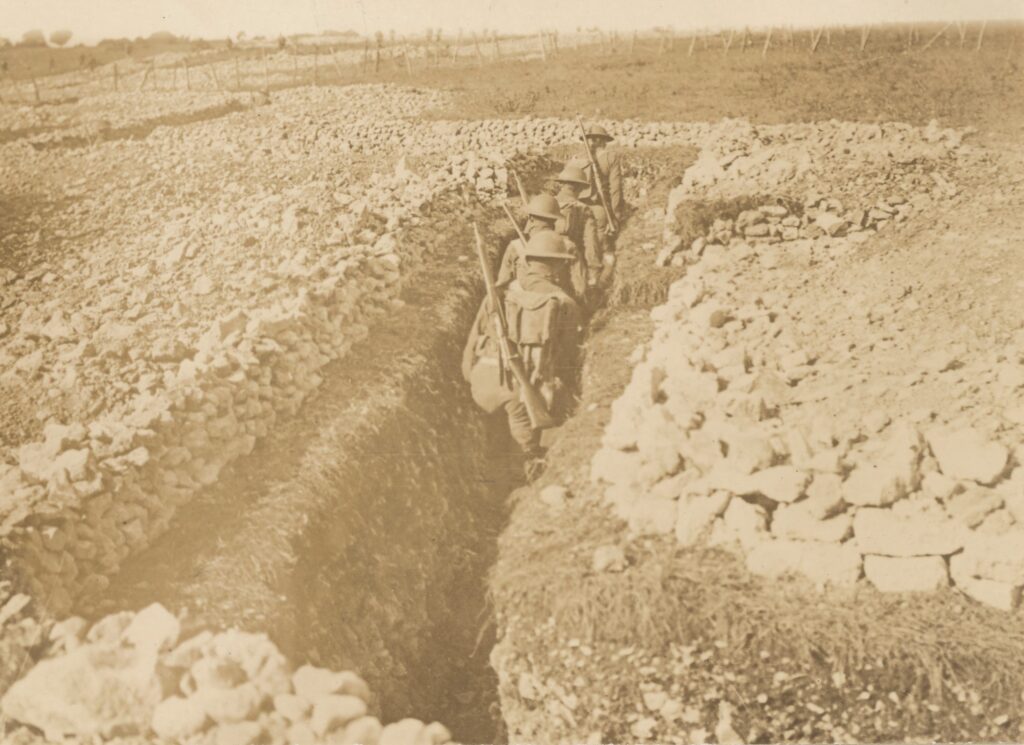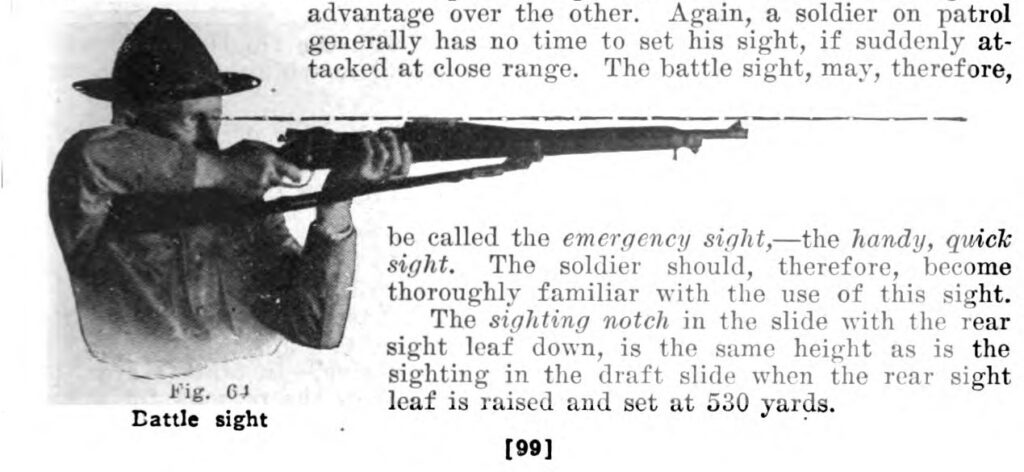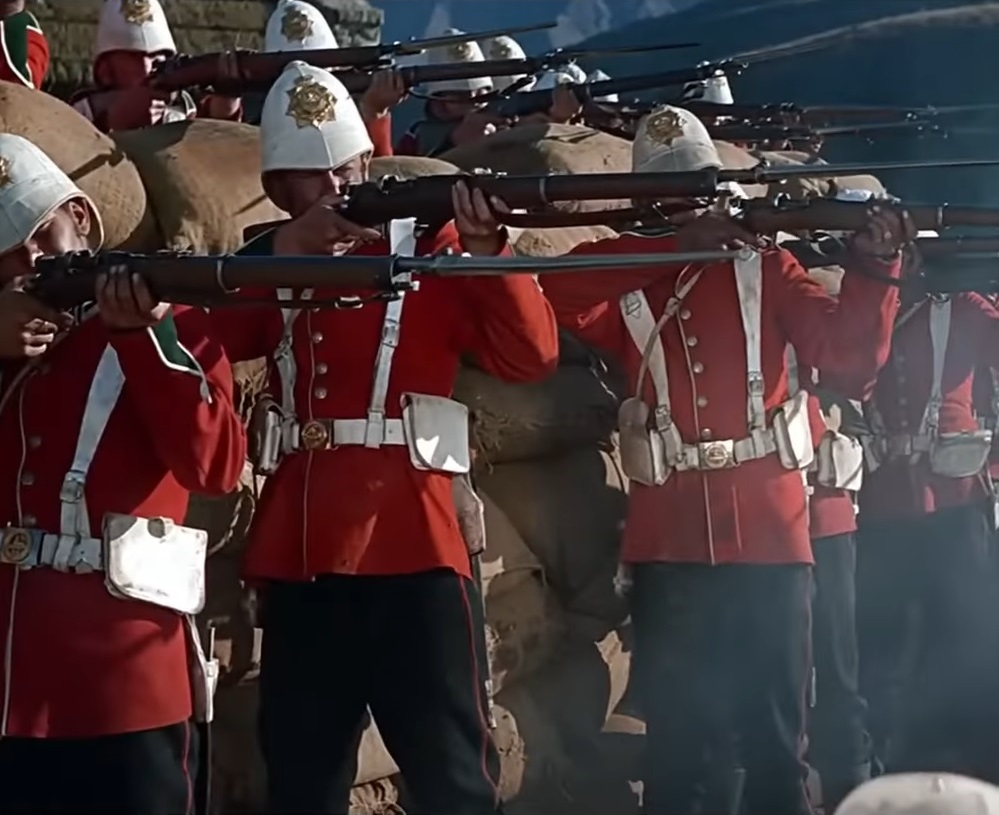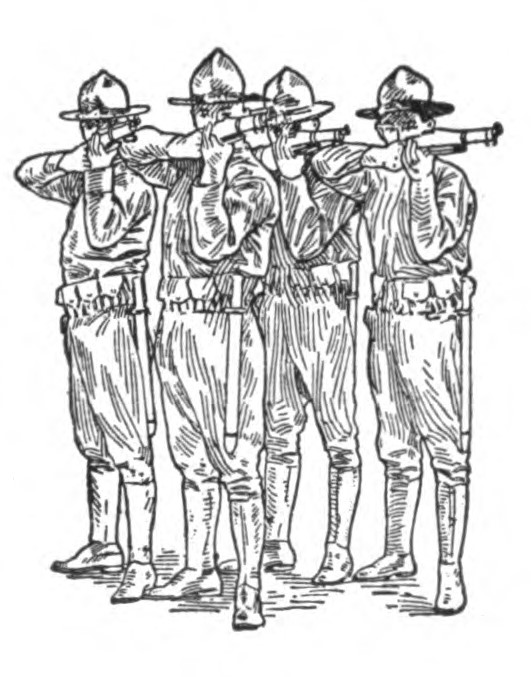While Moss’ manual was useful for providing a framework for military training and instruction for SATC units, it also reinforced outdated ideas about the nature of combat and warfare.
The Reality in Europe
By the time the manual was approved by the War Department on July 23, 1918, portions the American Expeditionary Force (AEF) had been in combat for nearly three months. When initially deployed, the AEF had not been able to execute the open warfare maneuvers that Pershing pushed for, but instead had been forced to fight in the trenches next to their French and British allies.1
Compounding the problems for American troops, the AEF did not have a sufficient grasp on the fundamentals of trench warfare. As far back as October 1917, when the first AEF units arrived in Europe, AEF commanders recognized this lack of training. Major General William S. Siebert wrote to General Pershing that, “Our officers are not sufficiently familiar with trench warfare conditions . . . and both the officers and men fail to visualize the possible effects of hostile artillery and trench mortar fire.”2 While this lack of knowledge would be somewhat fixed by training with French troops in Europe and French training officers being sent to the United States, the AEF and the War Department failed to make the necessary adjustments for training the SATC.

The Failures of Moss’ Manual
Col. Moss’ manual lacks any basic instruction in the principles of trench warfare or modern combat, primarily the coordination between different unit types. Known as combined arms, this principle allowed for artillery, machine guns, and aircraft to provide cover and support for infantry. In the preface, Moss states that “Matter bearing upon the present war has purposely been omitted. No matter has been inserted in this volume which has been marked ‘confidential’ by the War Department.”3 It is difficult to imagine that a basic understanding of the principles of trench warfare and combined arms would be considered ‘confidential’ by the War Department.
Moss devotes a significant portion of the manual to instructing soldiers in general military knowledge, infantry maneuvers, and combat against other infantry. This falls in line with General Pershing’s doctrine of mobility and marksmanship, but the lack of instruction in trench warfare and combined arms operations meant that SATC soldiers would need to receive more training before they could be deployed to the front. While the War Department did approve Moss’ manual, it was a hindrance to the goal of the SATC in expediting officer and specialist training.

Moss’ manual reflected his 19th century West Point education. For example, Moss devotes several pages on how to fire by volley, in which soldiers stand upright in several lines and each line fires in succession. This tactic had been used for several hundred years in warfare and was effective when firearms were inaccurate smooth bore muskets or single shot breech loading rifles. By the First World War, rifles held more than one round, were more accurate, and could shoot longer distances. This, combined with the dominance of machine guns and artillery, made volley fire a relic of the past and not useful for modern combat.


Notes:
- Edward G. Lengel, Thunder and Flames: Americans in the Crucible of Combat, 1917-1918 (Lawrence, Kansas: University Press of Kansas, 2015), 27.
- Sibert to Pershing, October 8, 1917, in World War Records, First Division, AEF, Regular, Vol. 12 (Washington, D.C.: n.p., 1928-1930) as quoted in Edward G. Lengel, Thunder and Flames: Americans in the Crucible of Combat, 1917-1918 (Lawrence, Kansas: University Press of Kansas, 2015), 23.
- Col. James A. Moss and Cpt. George R. Guild, Military Students Text Book Volume I: For The Use Of R.O.T.C. And S.A.T.C. Units At Educational Institutions (Menasha, Wisconsin: George Banta Publishing Company, 1918), 5, https://babel.hathitrust.org/cgi/pt?id=uc1.$b293492&view=1up&seq=10.
- Col. James A. Moss and Cpt. George R. Guild, Military Students Text Book Volume I: For The Use Of R.O.T.C. And S.A.T.C. Units At Educational Institutions (Menasha, Wisconsin: George Banta Publishing Company, 1918), 99, https://babel.hathitrust.org/cgi/pt?id=uc1.$b293492&view=1up&seq=10.
- “Zulu (1964) – Final Attack (Full) | HD 1080p 60fps,” Sep 7, 2022, in Zulu, directed by Cy Endfield, video clip, 6:33, https://www.youtube.com/watch?v=tPegFguqR8o.
- Col. James A. Moss and Cpt. George R. Guild, Military Students Text Book Volume I: For The Use Of R.O.T.C. And S.A.T.C. Units At Educational Institutions (Menasha, Wisconsin: George Banta Publishing Company, 1918), 57, https://babel.hathitrust.org/cgi/pt?id=uc1.$b293492&view=1up&seq=10.